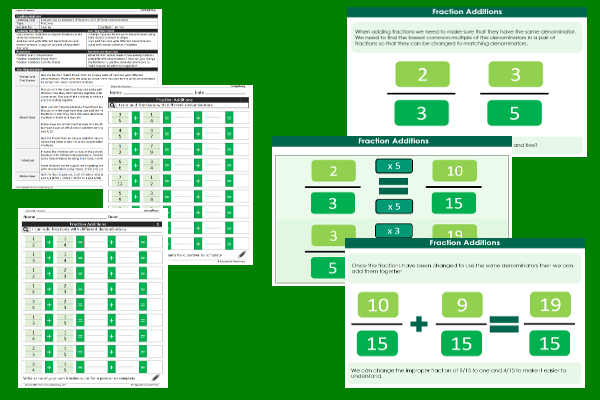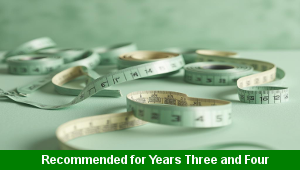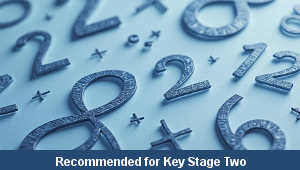Lesson Three – Fraction Additions

This maths teaching pack for Key Stage Two gets the children to explore and illustrate how to add pairs of fractions with different denominators by using their lowest common multiples.
The class can identify and explain the steps that can be followed when converting a pair of fractions to use the same matching denominators so that they can be easily added together.
Download this teaching pack including a lesson plan, classroom activities and an interactive presentation to teach the children to explore and illustrate how to add pairs of fractions with different denominators by using their lowest common multiples
Activities in this teaching pack include differentiated worksheets to model and record how to add pairs of fractions with different denominators by using their lowest common multiples to make it easier to complete each of the calculations sums.
The interactive presentation gets the children to identify and explain how to convert a pair of fractions to use the same denominators so that the fractions can be added together.
This lesson is part of a maths scheme of work to get the children to model and record the steps that can be used to solve problems by adding and subtracting pairs of non-unit and mixed number fractions. There are teaching activities for shared learning, differentiated worksheets to support independent learning and interactive presentations to introduce concepts and key skills.
-

Length Calculations
Practise using number calculations skills for addition, subtraction, division and multiplication when solving problems related to length measurements
-

Maths Calculations Assessment
Assess abilities in solving a range of different number problems for addition and subtraction when working with informal and formal written calculations
-

Determinant Lists
Explain and model how to make lists of objects used and found in different locations to match the correct determinants of a and an
-

English SPAG Assessment
Assess abilities in composing sentences for fiction and non-fiction using the correct spellings, punctuation marks and grammar vocabulary phrases
